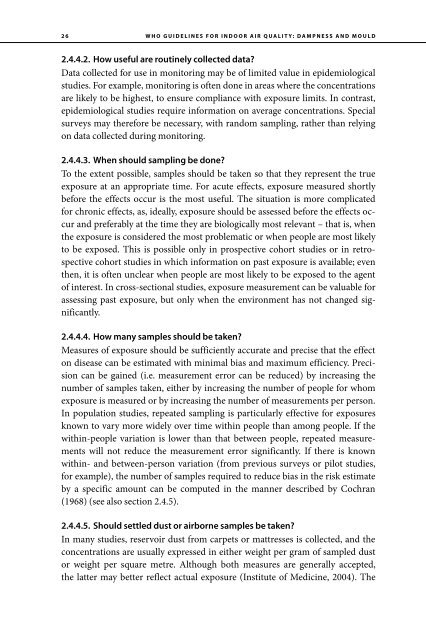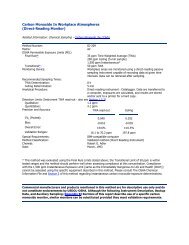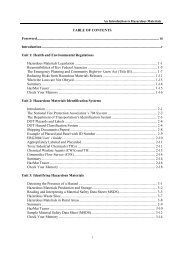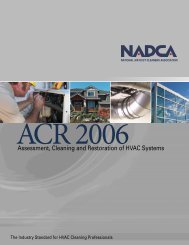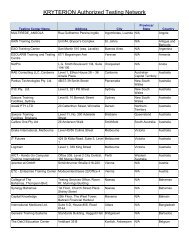Dampness and Mould - WHO guidelines for indoor air quality - PRWeb
Dampness and Mould - WHO guidelines for indoor air quality - PRWeb
Dampness and Mould - WHO guidelines for indoor air quality - PRWeb
Create successful ePaper yourself
Turn your PDF publications into a flip-book with our unique Google optimized e-Paper software.
26<br />
<strong>WHO</strong> GUIDELINES FOR INDOOR AIR QUALITY: DAMPNESS AND MOULD<br />
2.4.4.2. How useful are routinely collected data?<br />
Data collected <strong>for</strong> use in monitoring may be of limited value in epidemiological<br />
studies. For example, monitoring is often done in areas where the concentrations<br />
are likely to be highest, to ensure compliance with exposure limits. In contrast,<br />
epidemiological studies require in<strong>for</strong>mation on average concentrations. Special<br />
surveys may there<strong>for</strong>e be necessary, with r<strong>and</strong>om sampling, rather than relying<br />
on data collected during monitoring.<br />
2.4.4.3. When should sampling be done?<br />
To the extent possible, samples should be taken so that they represent the true<br />
exposure at an appropriate time. For acute effects, exposure measured shortly<br />
be<strong>for</strong>e the effects occur is the most useful. The situation is more complicated<br />
<strong>for</strong> chronic effects, as, ideally, exposure should be assessed be<strong>for</strong>e the effects occur<br />
<strong>and</strong> preferably at the time they are biologically most relevant – that is, when<br />
the exposure is considered the most problematic or when people are most likely<br />
to be exposed. This is possible only in prospective cohort studies or in retrospective<br />
cohort studies in which in<strong>for</strong>mation on past exposure is available; even<br />
then, it is often unclear when people are most likely to be exposed to the agent<br />
of interest. In cross-sectional studies, exposure measurement can be valuable <strong>for</strong><br />
assessing past exposure, but only when the environment has not changed significantly.<br />
2.4.4.4. How many samples should be taken?<br />
Measures of exposure should be sufficiently accurate <strong>and</strong> precise that the effect<br />
on disease can be estimated with minimal bias <strong>and</strong> maximum efficiency. Precision<br />
can be gained (i.e. measurement error can be reduced) by increasing the<br />
number of samples taken, either by increasing the number of people <strong>for</strong> whom<br />
exposure is measured or by increasing the number of measurements per person.<br />
In population studies, repeated sampling is particularly effective <strong>for</strong> exposures<br />
known to vary more widely over time within people than among people. If the<br />
within-people variation is lower than that between people, repeated measurements<br />
will not reduce the measurement error significantly. If there is known<br />
within- <strong>and</strong> between-person variation (from previous surveys or pilot studies,<br />
<strong>for</strong> example), the number of samples required to reduce bias in the risk estimate<br />
by a specific amount can be computed in the manner described by Cochran<br />
(1968) (see also section 2.4.5).<br />
2.4.4.5. Should settled dust or <strong>air</strong>borne samples be taken?<br />
In many studies, reservoir dust from carpets or mattresses is collected, <strong>and</strong> the<br />
concentrations are usually expressed in either weight per gram of sampled dust<br />
or weight per square metre. Although both measures are generally accepted,<br />
the latter may better reflect actual exposure (Institute of Medicine, 2004). The


